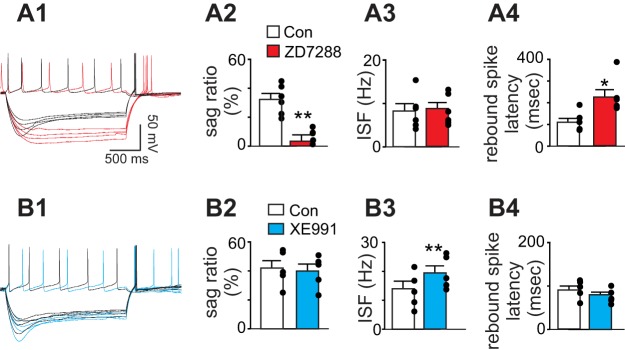Fig. 3.

Contributions of HCN and KCNQ channels to repetitive firing behavior of chemosensitive RTN neurons. A1: membrane potential responses to a depolarizing step (+20 pA) and hyperpolarizing current steps (−70 to −100 pA, Δ10 pA) under control conditions and in ZD9288 (50 μM, red). A2–A4: summary data (n = 6) showing sag ratio (A2), instantaneous spike frequency (ISF; A3) and rebound spike latency (A4) under control conditions and in ZD7288. Note the characteristic HCN channel-dependent depolarizing sag and short latency rebound spike. B1: voltage responses to a depolarizing step (+20 pA) and hyperpolarizing current steps (−70 to −100 pA, Δ10 pA) under control conditions and in XE991 (10 μM, blue). B2-B4: summary data (n = 5) showing sag ratio (B2), ISF (B3), and rebound spike latency (B4) under control conditions and in XE991 (10 μM, blue). Blocking KCNQ channels increased ISF but did not affect the sag ratio or rebound spike latency. *P < 0.05, **P < 0.01.
